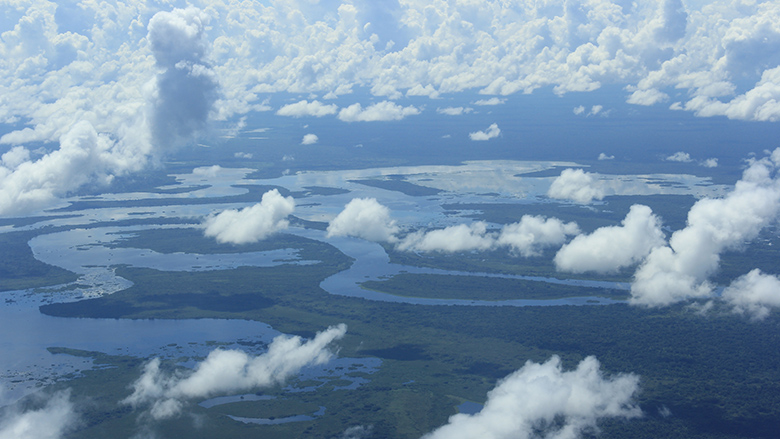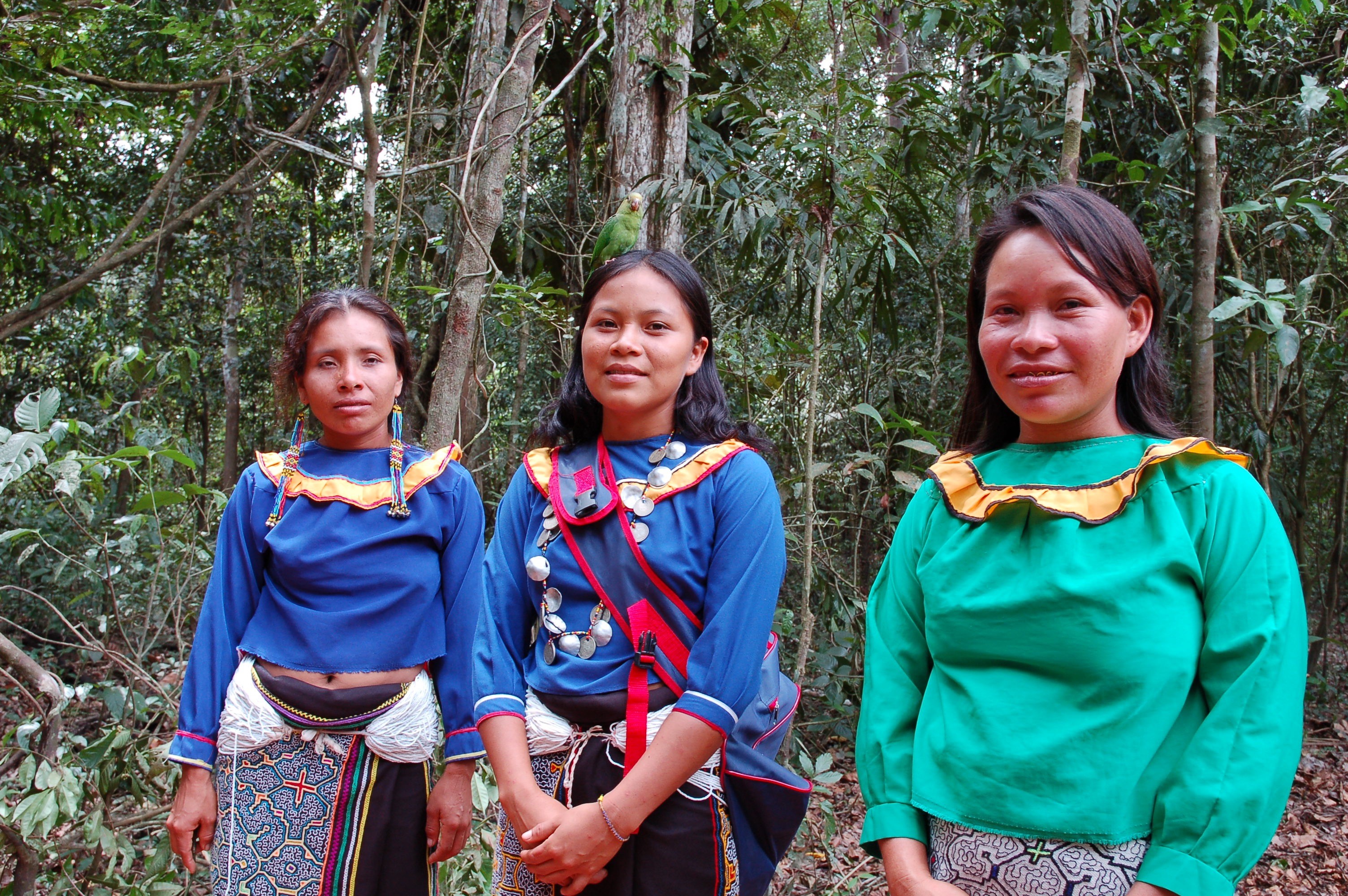tenure

Land tenure for forest peoples, part of the solution for sustainable development
By Gerardo Segura Warnholtz. Originally published by the World Bank.
In Science magazine, earlier this year, researchers revealed that ancient forest peoples of the Amazon helped create much of the imposing forest landscape that the world inherits today.
A growing body of evidence shows that the indigenous peoples and other rural communities who now inhabit these ancestral Amazonian "gardens" continue to be vital to their survival.
Today, as never before, cutting-edge tools and technologies allow ranchers to raise cattle and plant oil palm and soy in poor soils, and investors to build dams and roadways in some of the planet’s most remote forests, opening them to exploration and exploitation.
Like other rural peoples in the forests of Central America, Africa and Southeast Asia, many of the indigenous communities of the Amazon are battling for a way of life![]() that depends on keeping the forests standing. But recent evidence suggests that to successfully resist, or merely influence, the impact of powerful economic forces, indigenous and other forest peoples need rights to their lands that are strong and respected, and investments to support their efforts to manage the lands sustainably.
that depends on keeping the forests standing. But recent evidence suggests that to successfully resist, or merely influence, the impact of powerful economic forces, indigenous and other forest peoples need rights to their lands that are strong and respected, and investments to support their efforts to manage the lands sustainably.
These rights confer benefits, many of which will be discussed at the Conference on Community Land and Resource Rights in Stockholm next week, such as improvements in health and education levels, two key goals of sustainable development, and progress in stopping the destruction of rainforests, which governments, donors and investors have promised to do in committing to slow climate change.
In Stockholm, I’ll share findings from a recent study on “Securing Forest Tenure Rights for Rural Development,” which aims to improve understanding of what it takes to advance forest tenure reforms. The study identifies Latin America as far advanced in recognizing local or customary tenure rights. As of 2013, for example, “approximately 39% of the region’s forestlands were owned or controlled by indigenous peoples and local communities.” The record has made the region a model for those advocating for recognition and enforcement of customary land tenure in Indonesia and the forest nations of sub-Saharan Africa.
Yet the research also revealed that, cumbersome regulations, limited institutional capacity, and powerful competing interests continue to block the realization of legitimate customary rights, contributing to insecurity, conflicts, and displacement among some of the world’s poorest rural inhabitants.
Some of the challenges identified in the study include: clashes between government agencies; overlapping land claims that haunt the titling process; and bureaucratic obstacles that continue to prevent indigenous communities from taking part in decisions about the fate of their lands.
The study concludes, however, that laws alone are not enough to ensure recognition and respect for rights![]() ; and it notes that in some countries, a lack of political will seems to be a factor, despite evidence that governments struggle to control illegal deforestation, while investors have become increasingly wary of the high costs of conflict.
; and it notes that in some countries, a lack of political will seems to be a factor, despite evidence that governments struggle to control illegal deforestation, while investors have become increasingly wary of the high costs of conflict.
A risk analysis released last year by the Rights and Resources Initiative, featuring cases from Africa, Asia and Latin America, revealed a significant link between weak land tenure and financial risk for those investing in extractives and the production of commodities. In more than 60 percent of the cases studied, the authors identified failure to respect customary land rights of minorities and Indigenous Peoples as the primary cause of the dispute; in the forestry sector, this rose to 90 percent. The authors concluded that the local communities are, “principally interested in opportunities to continue traditional livelihoods![]() ,” but this does not mean they lack economic value.
,” but this does not mean they lack economic value.
Another study by the World Resources Institute (WRI) suggests that granting secure tenure to indigenous peoples and other rural communities—just in Latin America—could generate billions of dollars over the next 20 years, based on evidence of their ability to protect forests that are among the most carbon-rich in the world.
Some leaders may fear that granting rights to indigenous peoples and rural communities could damage their countries’ economies. Given the chance to address them directly, we would say that, “rather than damaging your economies, you will instead be pioneers on the edge of a new frontier; your countries will become magnets for investors seeking to serve a growing market for conflict-free, deforestation-free commodities. And that you will become known for choosing the path of sustainable development, in partnership with your own people, many of them with roots in the ancient forests that are so vital to the survival of the planet.”
So, it is time to urge decision makers across the world to embrace land rights for their economic benefits![]() ; to recognize that strengthening land tenure can support the goals of economic development, while addressing the risks of investing in regions where land rights are weak.
; to recognize that strengthening land tenure can support the goals of economic development, while addressing the risks of investing in regions where land rights are weak.
For stories and updates on related activities, follow us on twitter and facebook , or subscribe to our mailing list for regular updates.
Last Updated : 06-16-2024

Resolving forest tenure is key to promoting sustainable development and human rights
Imagine that you’re standing in a forest. Far below your feet, there could be valuable oil or mineral deposits that are probably owned by a national government. The soil that you’re standing on belongs to whoever holds a title to that land – an individual, a corporation, a community, or a local or federal authority. But who owns the trees?
In Latin America the answer to that question is, increasingly, indigenous peoples and local communities. “There was a spike in the trend of transferring access and control of forest resources from governments to indigenous communities,” said Gerardo Segura Warnholtz, Sr. Natural Resources Management Specialist and author of a new, PROFOR-supported book on forest tenure regimes in Latin America. “These changes were driven by governments realizing that they don’t have the capacity to adequately manage forests, and by the demands of local communities advocating for forest rights.”
Worldwide, secure land and forest tenure is gaining recognition as a key component of many sustainable development efforts, from promoting economic growth, to conserving biodiversity and reducing carbon emissions, to protecting human rights. “Tenure is seen more and more as a common denominator across several sectors, including agriculture, rural poverty, and climate change initiatives like REDD+ that depend on clarifying ownership of carbon,” Segura said.
Encouragingly, studies have shown that, where communities have strong forest rights and sufficient government support, deforestation rates (and associated carbon emissions) are much lower compared to areas outside community forests. This is crucial from a climate change perspective, as an estimated 25 percent of all carbon stored aboveground in tropical forests is being collectively managed by indigenous people and local communities.
However, many indigenous peoples are part of tenure systems that lack sufficient legal standing, and individuals may face severe challenges in exercising political power. “We are talking about basic human rights,” Segura emphasized. “It’s especially important to remember that most forested lands are, or have been, inhabited by local communities, many of whom have been marginalized.”
Consequently, Latin America’s recent efforts to reform forest tenure regimes are a crucial step in the right direction. But do they go far enough? Segura and his research team used the “bundle of rights” concept to analyze 10 tenure systems in six different Latin American countries: Argentina, Colombia, El Salvador, Honduras, Nicaragua and Peru. Of the 10 systems, the team found that seven meet all of the requirements for a full bundle of rights, meaning that communities on these lands were entitled to access forests and exclude others from doing so; use and manage forest resources at their discretion; challenge a government’s decision to infringe on these rights; and hold these rights indefinitely.
That said, many countries have yet to fully implement these legal frameworks. In Peru, for instance, land titling initiatives have moved slowly, and have concentrated on the Amazon region, where local and national activism efforts have been the strongest. Across all of the countries analyzed, limited institutional, technical and financial capacity poses obstacles to comprehensive forest tenure reform.
In addition, three regimes in Segura’s analysis maintain some restrictions on the bundle of rights, while El Salvador has yet to reestablish collective land ownership since it was abolished in the late 1800s. The country also only recognized the legal status of indigenous minorities in 2014. “El Salvador is the outlier in this study, but in a general way it acts as a good illustration of what happens when we don’t act,” explained Segura. “El Salvador lost most of its forest a long time ago, and its agricultural economy is on the verge of collapse. We are seeing so many threats to forests around the world - if we’re not more careful about forest management, the consequences could be devastating.”
Segura’s hopes that, with the publication of his new book and ongoing PROFOR work to consolidate and promote understanding and best practices around forest tenure reform, governments and development institutions will be convinced that undertaking forest tenure reform is well worth the risk.
“This topic is seen as so complicated, risky and contagious,” he said. “How can we de-risk it? We need to translate the knowledge we have into tools that are directly useful to practitioners. Governments need to keep devolving rights to communities, as well as establishing and enforcing management rules in a transparent and inclusive way. If we can achieve that, there will be positive outcomes for conservation and for development.”
For stories and updates on related activities, follow us on twitter and facebook , or subscribe to our mailing list for regular updates.
Last Updated : 06-16-2024








